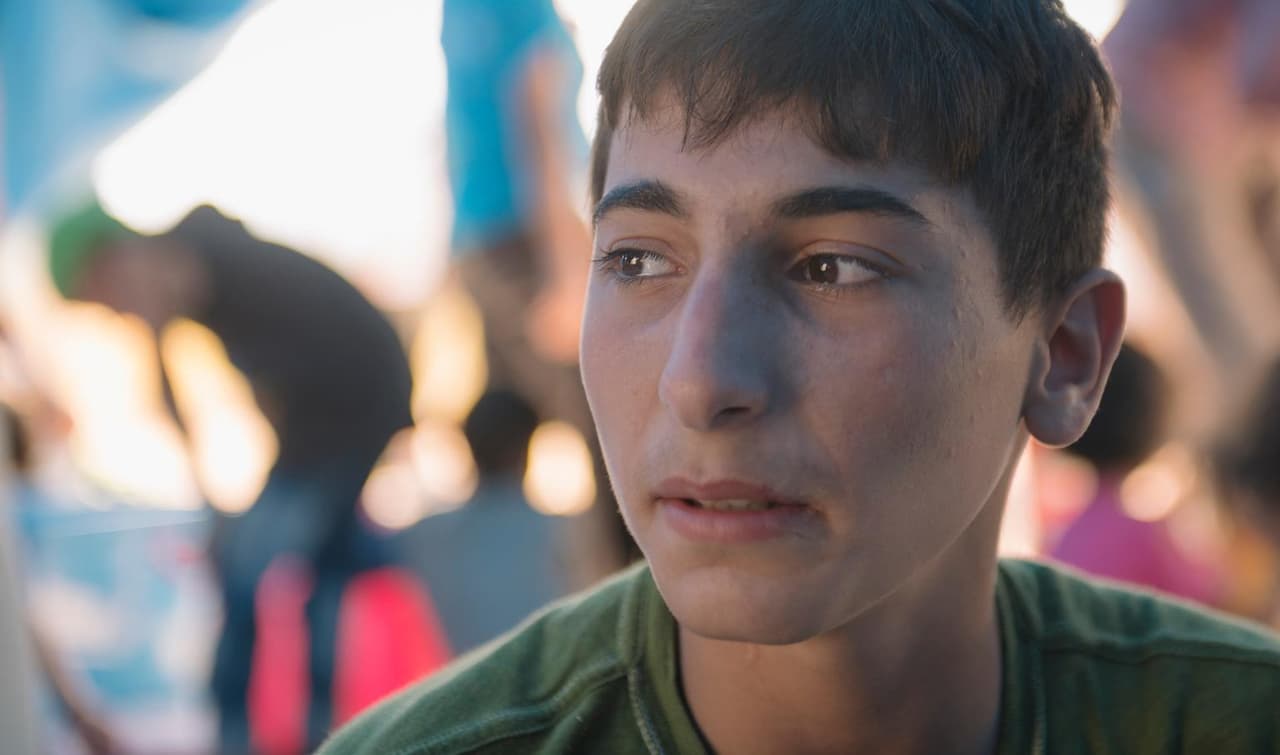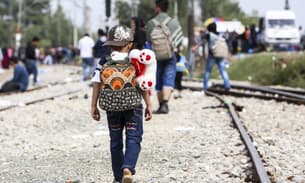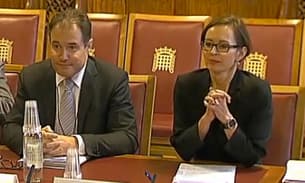
Revealed: Fourfold rise as 95,000 unaccompanied children claim asylum in Europe in 2015
Record numbers of children are seeking refuge in Europe (Unicef/Klincarov)
At least 95,000 unaccompanied children applied for asylum in Europe last year, four times the numbers for 2014, Bureau research can reveal.
The huge increase was discovered by the Bureau during an investigation into the level of migration among unaccompanied under-18 year olds in Europe and the stark inconsistencies in the way they are treated.
From approaching 29 different governments for statistics, we found at least 95,070 applied for asylum in Europe in 2015, up from 23,572 in 2014.
It is the first time any concrete figure has been reported for the actual scale of migration among unaccompanied minors during last year’s refugee crisis
An estimate was given by Save the Children in January when the charity suggested 26,000 unaccompanied children arrived in Europe in 2015.
Only 17 of the 29 countries we approached provided any data. Spain refused to cooperate with us, while France said we must wait for publication of official data later this year. Eurostat, the EU data agency, will also complete its own figures in the coming months.
We also found huge differences in the way the children are treated by national authorities, with some using controversial methods such as wrist bone x-rays to determine age.
The numbers raise serious questions, not only for the ability of countries to cope with the influx, but also around the children’s welfare and their uncertain future.
Related story: From Kent to Kabul – the Westernised young men being deported to Afghanistan
The Bureau has been investigating the issues faced by unaccompanied minors for two years. Our focus had been on the UK but we expanded our efforts to continental Europe late last year.
We approached 27 EU member states for numbers, plus Norway and Switzerland.
Almost all the larger countries were among the 17 which provided details.
Of those 17, Sweden registered the most asylum applications by lone children in 2015 – 35,369. This was followed by 14,439 in Germany, 9,331 in Austria and 8,804 in Hungary.
The UK came in ninth place with 3,043.
In nearly every case, the numbers were up significantly from the year before. In Sweden, the rise was 402%. In Hungary, which is considered a transit country where many asylum claims are first made, applications soared from 607 to 8,804.
Sarah Crowe, Unicef’s spokeswoman for the Refugee and Migrant Crisis, said the problems were continuing this year, at least in Greece. She said in the first 11 weeks of 2016, 1,156 unaccompanied and separated children had been registered there.
She added: “It is so important to have details on figures. There are unprecedented numbers of refugee and migrant children now stranded in Greece.
Before I lost my mom she told us that we will go to Sweden, when I lost them I thought they would have come to Sweden, so I also came – Hamid, 12
“Children first and foremost are children – they don’t know if they are refugees or migrants – they just know they are children and should be treated and welcomed as that.”
Last year’s refugee and migration crisis saw at least 1.2million people cross Europe’s borders seeking asylum, many searching sanctuary from war.
Among them were tens of thousands of under 18-year-olds. They included orphans, those who fled home without their families, and those who had become separated from their parents en route.
Alone and separated from mum: Hamid’s story
 Hamid, 12 – Photo: Maeve McClenaghan
Hamid, 12 – Photo: Maeve McClenaghan
When the Bureau met Hamid at a children’s reception centre in Malmo, Sweden, late last year, he was like any other excitable, football-loving 12-year-old boy.
But in every other way, according to his own story, his life has been both tragic and extraordinary. He lives in hope he will one day soon meet his mum again.
An Afghan, he was travelling to Europe with his mother and four siblings when shooting broke out at the border of Turkey and Iran. Hamid said he ran for his life and when he stopped, his family was nowhere to be found.
“Before I lost my mom she told us that we will go to Sweden, when I lost them I thought they would have come to Sweden, so I also came.”
Lost and alone he decided to follow other travellers. He was stopped in a camp at Germany and was told he was too young to travel on, but he escaped and kept going, finally reaching Malmo, a small city on the Swedish-Danish border.
There Hamid was put in a transit centre, a place intended to house children for just two or three days. But the huge influx of children led to backlogs and he was there for more than a month. Finally, weeks after arriving, he was sent to live with a foster family and the process could begin to try and trace his family.
Hamid has now been in Sweden for more than four months – and still no sign of hope.
Our research found that the largest number of unaccompanied minors were from Afghanistan, with 23,480 claiming asylum in Sweden alone in 2015. Sweden also saw 3,777 Syrian youngsters register claims.
In the UK, the numbers were much smaller with 694 minors from Eritrea topping the list. Only 186 came from Syria.
The EU has rules for what member states should do when unaccompanied children arrive in their territory and seek asylum. However, it is up to the individual member state to decide how to implement these obligations into policies and laws.
Differences between those asylum systems and the differing terminologies make it difficult to keep track of the numbers of unaccompanied children.
The likelihood of a child being granted asylum also varied greatly.
We asked each country for the number of successful applications but only a few were able to provide that data.
Sweden has traditionally been the most generous in terms of granting asylum to children. It made 4,660 decisions on unaccompanied minors last year, with 3,076 receiving a usually permanent residence permit – a success rate of 66%.
In the UK, the asylum success rate was 23%.
Only the UK and Sweden could provide data on how many former asylum-seeking children had been returned once they turned 18. In the past seven years, Sweden has returned at least 224 children, while over nine years the UK has returned 2,675 to Afghanistan and Iraq alone.
Replies from other countries varied, from Austria which said it didn’t think the data actually existed to Germany which replied it was impossible to distinguish former unaccompanied minors from general returns.
France, Italy and Spain do not register asylum seeking children in the same way as other countries such as the UK. Lone youths rarely apply for asylum in France because all unaccompanied children are automatically under the protection of the state – protection de l’enfance – regardless of their asylum status.
This expires when they reach 18 and they must then apply for permanent asylum or temporary leave to remain. At that point, the onus is on the applicant to remember details and provide evidence from possibly many years before.
Assessing age
But one of the biggest differences among the countries analysed was in how states assess the true age of those arriving.
Because most countries provide higher standards of care for children, there is a degree of suspicion among immigration officials that some claiming to be minors are in fact over the age of 18.
A study in Denmark of its 2014 intake of asylum seeing children found that in 72% of the 282 questionable cases, those claiming to be minors were adults.
But countering any “culture of disbelief” is also difficult for minors. Many come from countries such as Afghanistan where birth certificates are rare, while others have lost or forgotten their documents.

They are then subjected to an age assessment.
In rare cases in Austria and Germany, for example, assessments have previously included the testing of claimant’s genitals. It is unclear whether this still happens.
Elsewhere, in France, Denmark and Italy, doctors perform x-rays on children’s teeth or wrists to try to establish age through their bone density.
These methods are controversial. Many scientific bodies across Europe such as the France’s Haut Conseil de la Santé Publique (department of public health) have cast doubt on the validity of x-rays to determine age and consider them unethical due their unreliability.
Such methods have been rejected by other countries including the UK and Sweden. In the UK, social workers ask children a series of questions about their background and physical changes to try to establish their age.
In Sweden, the government did try to encourage medical examinations but doctors refused, saying they were unreliable and unethical.
It means that officials there also still use interviews with children, asking them about their personal journeys. However, minors can request medical examinations to strengthen their case. Proposed changes to Swedish asylum policy later this year would mean greater use of these medical examinations.
*Additional reporting: Alessandro Accorsi, Emanuele Midolo, Brindusa Nastasa, Alex Blasdel, Faye Lipson, Thea Carley, Sunil Patel






